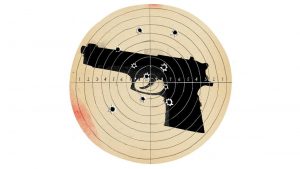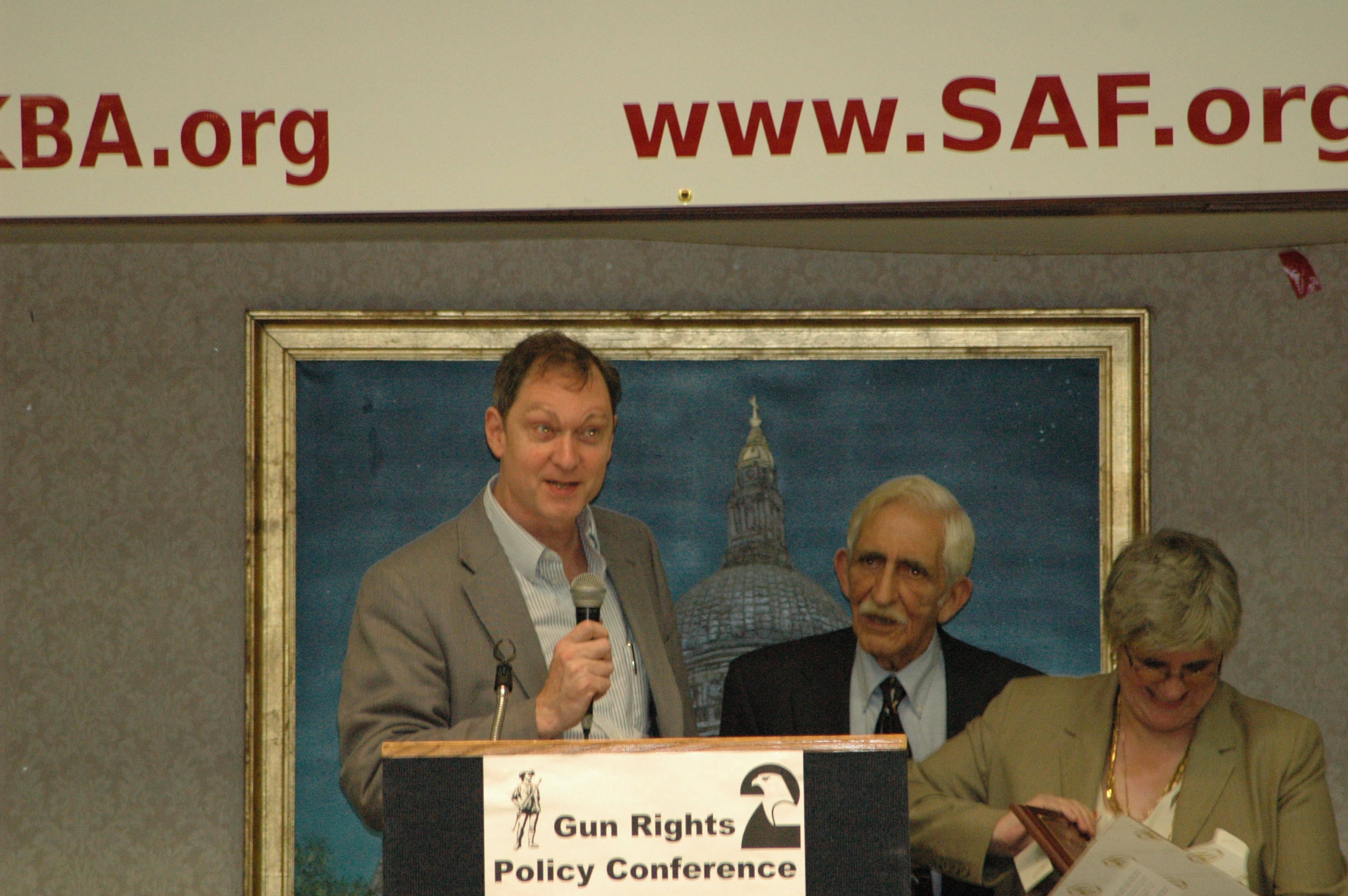Note: This article originally appeared in The Trace on September 16th, 2015
Last week the Brady Campaign released an extensively researched report titled “The Truth About Guns & Suicide,” kickstarting a long overdue conversation on the role firearms play in suicides. The Washington Post, for instance, called the phenomenon “The death toll from guns no one talks about,” noting that suicide accounts for two-thirds of the 30,000-plus gun deaths each year in the U.S.
Some gun-rights advocates minimize that death toll by claiming suicide is“not morally comparable” to murder. Their talking points on self-inflicted gun deaths echo those used to explain away all gun violence: Just as a murderous person will pick up a knife or a lead pipe if he can’t get a firearm, a depressed person will turn to pills or a noose if a handgun is not handy. But the research collected by the Brady report and published elsewhere proves this isn’t true. Firearms are the most effective means for ending your own life, and the easier it is to obtain a gun in a given state, the higher the number of residents who kill themselves with them. Which means that a serious effort to reduce suicides has to focus on reducing easy access to firearms.
As the Brady report points out, most suicides are impulsive actions, with 71 percent of suicide attempts occurring within an hour of the decision to commit the act. This means that even small barriers can help prevent suicides, and prevent them for good: Ninety percent of people who survive an attempt do not try again.
But few people survive a suicide attempt with a firearm. Such attempts are successful more than 85 percent of the time, compared with a success rate of 3 percent or less for overdosing and wrist-cutting, two of the most common suicide attempt methods. This helps explains why more than half of all completed suicides are carried out by firearms, according to to the Center for Disease Control. A 2012 paper by Dr. Matthew Miller at the Harvard School of Public Health and colleagues highlighted the importance of this point, concluding that “if even one in 10 of the approximately 22,000 persons who attempted suicide with firearms in 2010 (the 19,932 who died and the approximately 2,000 who survived) substituted drugs or cutting, there would have been approximately 1,900 fewer suicide deaths.”
In addition, states with the highest firearm ownership rates have the highest firearm suicide ratesThe evidence that greater access to guns results in more suicides is nearly unanimous. As we have written previously, every singlecase-control study done in the United States has found the presence of afirearm in the home is a strong risk factor for suicide. (That’s 24 separate studies).
Backed this overwhelming research, some groups are experimenting with policies and programs that can reduce the prevalence of suicide by limiting a depressed individual’s access to firearms. The clearest example is the “Perfect Depression Care” initiative created by the Henry Ford Health System, a large scale suicide prevention program caring for nearly 200,000 high risk patients. This pioneering program initiated a number of policies, including asking patients about weapons (particularly firearms) in the home and strongly recommending that they be removed. The results were staggering. Before the initiative began in 2001, the patient group was suffering a suicide rate of 89 per 100,000 (much higher than the general population). By the end of the study period in the first quarter of 2010, the patient group hadn’t experienced a single suicide since 2007. The program’s policies limiting access to firearms likely saved hundreds of lives.
The neuropsychiatrist leading the effort, C. Edward Coffey, MD, told The Journal of American Medical Association: “Patients have come to us and said, ‘It’s a good idea that you had me take the gun out of my house; some nights I’d sleep with it on the pillow beside me.’” Coffey went on to conclude that “these sorts of comments indicate that suicide is often impulsive and that imposing even a short delay can allow the impulse to pass.” Had that patient kept the firearm, during a period of extreme mental anguish he could have easily made the fateful decision to turn the gun on himself in an instant. Without the firearm, the impulse to commit suicide would be followed by trying to find a more difficult means, allowing time for the impulse to fade. And even if the patient did carry out the suicide attempt with an alternative, slower-acting means, that attempt would be far less likely to be fatal.
It’s not just direct health care programs than can have a pronounced effect on reducing gun and overall suicides. Indeed, the evidence indicates that tougher firearm laws can have a significant impact on suicide rates, even when the policy itself is not specifically crafted with suicides in mind.
The most recent evidence comes from a 2015 study by Daniel Webster and several colleagues at the John Hopkins Bloomberg school of Public Health. Examining data from Connecticut passing a Permit-to-Purchase (PTP) law in 1995, and Missouri repealing it’s PTP law in 2007, Webster found that firearm suicide rates dropped by 15.4 percent in Connecticut, but rose by 16.1 percent in Missouri. While suicides by methods other than firearms also dropped in Connecticut, in Missouri, there was no change in suicides by other means — what’s known as the substitution effect.
Had there been a substitution effect in Missouri, we would expect suicides by alternative methods to decrease, indicating that individuals were exchanging other methods for newly available firearms, resulting in no net change in overall suicides. But since Missouri did see an increase in gun suicide rates, with no offsetting decrease in alternative methods, it would seem to indicate that this spike was driven by greater access to firearms. The John Hopkins study is supported by a 2013 review which found significant international and domestic evidence that policies such as permit requirements and waiting periods significantly lower suicide rates.
With suicide rates climbing in the U.S. — in 2013, there were 12.6 suicide deaths per 100,000 people, compared with 10.4 deaths per 100,000 in 2000 — formulating policy to combat the rising death toll is critical. While increasing access to mental health programs is important, focusing on decreasing access to firearms is a proven method of saving lives. As Harvard’s Dr. Miller emphasizes, “If every life is important, and if you’re trying to save people from dying by gunfire, then you can’t ignore nearly two-thirds of the people who are dying.”

![ed-11-1920x1000-c-top[1]](http://www.armedwithreason.com/wp-content/uploads/2015/10/ed-11-1920x1000-c-top1.jpg)


![shutterstock_199312421-1920x1000-c-top[1]](http://www.armedwithreason.com/wp-content/uploads/2016/03/shutterstock_199312421-1920x1000-c-top1-300x156.jpg)
![049kidwithgun_DM_468x325[1]](http://www.armedwithreason.com/wp-content/uploads/2013/10/049kidwithgun_DM_468x3251.jpg)
![539264_10151555914761833_416157604_n[1]](http://www.armedwithreason.com/wp-content/uploads/2013/08/539264_10151555914761833_416157604_n1.jpg)

![gun-control[1]](http://www.armedwithreason.com/wp-content/uploads/2013/09/gun-control1.jpg)